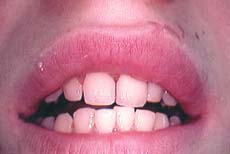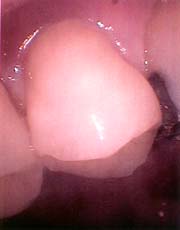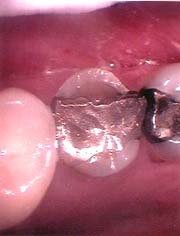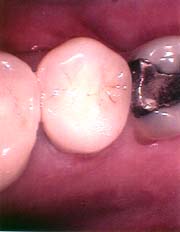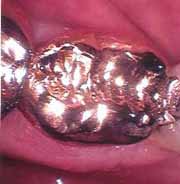| Here are some common situations in which a crown is recommended.
|
 A large filling in your molar has developed a crack. To provide more structural support a crown might be recommended. A large filling in your molar has developed a crack. To provide more structural support a crown might be recommended.
|
 You were eating and the next thing you knew you were holding a piece of tooth in your hand; a cusp has broken from a tooth which was probably weakened due to a large filling. You were eating and the next thing you knew you were holding a piece of tooth in your hand; a cusp has broken from a tooth which was probably weakened due to a large filling.
|
 You are experiencing a sharp pain when biting into something. This is often due to microscopic cracks within the tooth structure. To relieve the discomfort and protect the tooth from breaking a crown is often recommended. You are experiencing a sharp pain when biting into something. This is often due to microscopic cracks within the tooth structure. To relieve the discomfort and protect the tooth from breaking a crown is often recommended.
|
 You've been in an accident and have a tooth so badly fractured that most of the tooth is missing. The remaining tooth and root can be used to rebuild a functional and normal looking tooth. You've been in an accident and have a tooth so badly fractured that most of the tooth is missing. The remaining tooth and root can be used to rebuild a functional and normal looking tooth.
|
 A tooth that has had root canal treatment usually needs the structural support provided by a crown. A tooth that has had root canal treatment usually needs the structural support provided by a crown.
|
 The shape of a misshaped tooth can be corrected by the use of a crown. The shape of a misshaped tooth can be corrected by the use of a crown.
|


